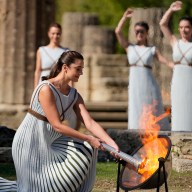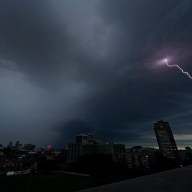Long before herds of buffalo stampeded across the Prairies, dinosaurs roamed the area that would become southwestern Saskatchewan.
It’s here, in the tiny town of Eastend, Sask., population 600, where one of the largest skeletons of a Tyrannosaurus rex was found. At the T.rex Discovery Centre in Eastend, Scotty, as the Tyrannosaurus rex has become affectionately known, provides a glimpse into Saskatchewan’s prehistoric past.
“Scotty is a pretty unique find,” said Sean Bell, general manager of the T.rex Discovery Centre.
“He’s probably one of the top five complete T. Rexes in the world.”
Scotty was first found in 1991 by a high school principal who was out on expedition with two paleontologists from the Royal Saskatchewan Museum. The Regina-based museum began the excavation in 1994 and more parts of Scotty were found in the summer of 2002.
According to the museum’s website, more than 65 per cent of the skeleton has been recovered, including most of the skull and jaws, many vertebra and ribs, the hip bones, most of a hind leg, and assorted other bones. But there’s still work to do. “Some of his bones are still encased in extremely hard rock,” said Bell.
“The Royal Saskatchewan Museum … they’re the ones doing the actual work on him and they did the excavation, they’re still fighting to get some of that material out of the rock.”
What has been found is stored at the T.rex Discovery Centre, which opened in July 2003.
“A good portion of the material is visible on display unarticulated, so you can actually see the tail for example is on display and it’s quite a long tail,” said Bell.
“Some of the leg bones are on display. Scotty’s femur, the big thigh bone, is enormous and that’s usually a very impressive one,” he said.
“We do have a model of the skull as it was understood in 2004. I say as it was understood in 2004 because new material (the back of the skull) was found after that cast was made and makes the skull actually bigger than what you see out there.”
Other new information came to light at a conference at the centre in May when Phil Currie, one of Canada’s leading paleontologists from the University of Alberta, estimated that Scotty weighed about 5.3 tonnes – making him the largest T. Rex known, at least by body mass.
It’s also believed Scotty was one of the oldest Tyrannosaurus rexes.
“The oldest measurable one was 28 years old. From what they can tell, Scotty’s bones don’t allow them to measure the same way, meaning he sort of out-aged the aging studies,” laughed Bell.
Oh, and there’s one more thing. “I keep saying he, but (Currie) figures it’s probably a female. They think Scotty may be a girl,” said Bell.
She is not alone in the T.rex Discovery Centre.
Bell said there are cast models from other T. Rexes, including the skull of Black Beauty from Alberta and Big Mike from Montana.
The centre, which draws about 10,000 visitors each year, was built into the hillside and has a wall of windows across the front that look out into the lush Frenchman River Valley. It’s open year-round and offers programs for all ages.
Good to know
• The T.rex Discovery Centre is about 385 kilometres southwest of Regina, or about a four-hour drive. It’s less than an hour away from Cypress Hills Provincial Park, making it an easy day trip for campers.
• www.eastend-sask.com has a map and several well detailed self-guided tours of the region.
• Check out www.dinocountry.com for links to information on the T.rex Discovery Centre and its programs.













